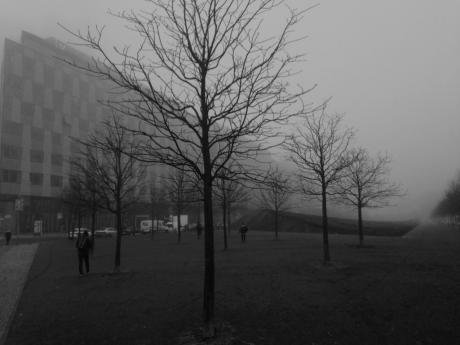

The archaic shape of Maiden Tower the change of masonry style and colour of the stone darker than that of the earliest of the dated monuments of the Old City the 11 th century Synyk –Kala minaret –suggest that it can be attributed to an earlier date of around 5 th-6 th centuries.The ruins of the obviously ancient buildings around tower support this suggestion. Was this for decorative purposes to break the minority of the huge expanses of walls or is the different style of stonework accounted for by different building periods.

Another riddle of the masonry of the outer walls smooth below it starts to be ribbed from about halfway up the tower and buttress. Nor has anything been found within the buttress to suggest that it served as an additional chamber or secret room. The projection is conventionally referred of a resort to as a buttress but scholars tend to discount the view that is was built for defense purposes or to give the tower additional structural strength or to protect if from erosion by the sea waves. Standing on a coastral rock face which protected it from dampness and from tunnels being dug under its walls, the cylinder-shaped Maiden Tower has strange projection at its base which gives in the apperiance of a resort. Rising to a height of 90 ft, it stands much the same way as it did a thousand years ago, though today it is not surrounded by the waves of the Caspian Sea. Past the caravanserais is the famous Gyz Galassy(Maiden Tower), a structure unparalleled for its architecture whether in East or West. Notice the 14 th century ventilation shafts in the wall as you enter the building. Above in the tea-room serving, there is a choose of oriental sweets it has nine private rooms, two of them are furnished in oriental style,with carpets and mutakka cushions. The Multani consists of two cellars with stylish interiors and period lamps over the tables. On the left you have the Multani restaurants, also set in a 14 th century caravanserai where Indian merchants from the Multani province used to stop. It has 16 private rooms arranged around a patio, which are attractively decorated with low tables, benches and brightly-coloured mutakka cushions. It specializes in Azerbaijan national cuisine. On the right is Bukhara, so called because it is set in a genuine 16 th century Bukhara caravanserai. It is hardly surprising therefore that only a few of these foundations have been preserved.įurther on you will find yourself in a narrow lane with a restaurant on every side. The citizens, artisans and small traders, who were not very numerous, had fairly modest dwellings. In those far away times, the nobility and countries of all ranks lived at court, the clergy round the mosques, the merchants and peasants bringing their produce to the market in the caravanserais. The 14 th-15 th century private dwellings, have nearly all been lost though. Most of the important medieval structures (the caravanserais, the mosques, the baths and of course Maiden Tower and the Palace of the Shirvan-Shahs) are intact. This open-air museum of Azerbaijan culture has been in the main preserved. Now the citadel,Icheri –Shekher a unique historical monument. The walls have been restored several times. A stone found in the ruins of one of the walls, bears the following kufic inscription:”Fortress built by the order of Shirvan –Shah Abdul Hidja Manutchehr of the Kesranid line (1120-49).”On the both sides of the gateway there are stones carved with texts from the Koran inserted into walls. The present perimeter of the fortress emerged in the 13 th-15 th centuries replacing an older one. In the course of the many wars over the centuries, the walls were repeatedly destroyed and rebuilt. The outer wall was pulled down when intensive buildings started in the 19 th century. Between the walls was a water-filled moat. If the enemy succeeded in scalping the first wall they found themselves in a stone trap where they could be shot at by archers from all sides. There was an outer wall about 40 feet off it. The fortress wall still standing was the inner one. For about thousand years a lively stream of traffic –peasants driving bull-carts, brilliant cavalcades of horsemen, camels, caravans and occasional pilgrims-poured across the drawbridge over the moat and through the arch with its massive iron-cased double gates. The Old city used to be the main gate of the city.


 0 kommentar(er)
0 kommentar(er)
